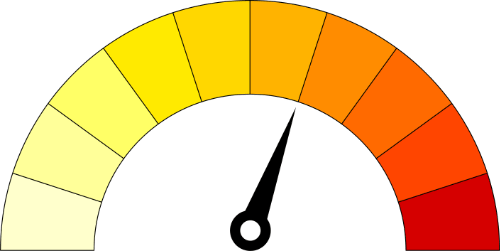This post is part of a larger deep dive
Curious about the role of Edgar Allan Poe’s "The Narrative of Arthur Gordon Pym of Nantucket" in Not to Be Reproduced? Check out Not to Be Reproduced Explained
Or read the full Not to Be Reproduced article!
This post is part of a larger deep dive
Curious about the role of Edgar Allan Poe’s "The Narrative of Arthur Gordon Pym of Nantucket" in Not to Be Reproduced? Check out Not to Be Reproduced Explained
Or read the full Not to Be Reproduced article!
Artist: René Magritte
Year: 1937
Medium: Oil on canvas
Location: Museum Boijmans Van Beuningen, Rotterdam, Netherlands
Dimensions: 81.3 cm x 65 cm

Our rating

Your rating
Very few would disagree with the statement that René Magritte was one of the most talented and peculiar surrealistic painters that ever existed.
Magritte was a painter:

Magritte was a philosopher:
You can wonder about what is imagined and what is real. Is it about the reality of appearances or the appearance of reality? What really is inside, and what is outside? What do we have here: reality, or a dream? If a dream is a revelation of waking life, waking life is also a revelation of a dream.
René Magritte
Magritte was a poet:
The function of painting is to make poetry visible.
René Magritte
A painter, a poet and a philosopher – what a combo!
I dare say that Magritte’s paintings lack the vivacity of a Dali or the drama of a Max Ernst, but they are surely the more philosophical of the bunch.
Luckily, this alone, gives me plenty of material to analyse :).
Not to Be Reproduced is one of my favourite paintings by Magritte, and will be the topic of the present article.
Not to Be Reproduced (original title: La reproduction interdite) is a 1937 oil painting by Belgium artist René Magritte.
It shows a man standing and looking into a mirror. Contrary to our expectation, the image in the mirror shows the reflection of the man’s back, as opposed to the frontal part of his body and his face.
The man depicted is likely British poet Edward James, who commissioned the work from Magritte.
A French copy of the book The Narrative of Arthur Gordon Pym of Nantucket (Les aventures d’Arthur Gordon Pym) by Edgar Allan Poe is visible on the mantelpiece on the lower right corner. Contrary to the man’s reflection, the reflection of the book in the mirror is correct.
Behind the reflection of the man we see a bland brown/dark orange wall, which takes up about half the painting. It is probably a reflection, suggesting that the room in which the man is in is mostly empty.
An interesting aspect of this painting is that even though the man’s reflection is clearly impossible within our physical world, there are other elements that mimic reality as we know it (e.g., the correct reflection of the book in the mirror).
Magritte reveled in such contradictions because they confronted viewers with two incompatible manifestations, forcing viewers to face this contradiction and reflect upon it (see also our article on Hegel’s Holiday).
As we will see, this has very much in common with the story of the novel on the mantelpiece, which, in my opinion, plays a much central role in the meaning of the painting than most analyses I read appear to suggest.
I find the execution of this painting formidable. Look closely how well Magritte applied contrast to make the hair look shiniest closest to the light source; how the man’s shadow covers half of the book, which is also surgically reflected on its reflection in the mirror; how the creases of the man’s suit jacket are carefully positioned; how the marmoreal polish of the fireplace looks almost photographic.
The ambiguity of the painting causes a slight discomfort in the viewer. One expects to see the frontal part of the body and the face, but is presented instead with a duplicate of the man’s back. This ambiguity, coupled Magritte’s use of dull colours and largely empty room, gives this painting a slight sinister look.
And let’s be honest. Not to Be Reproduced isn’t lavish. You could even argue that it is ordinary and static.
But making flamboyant art was never Magritte’s aim as an artist. Being the philosopher and the poet he was, Magritte attached more importance to the thought process.
For Magritte, painting should reflect what goes on in the mind, rather than what the physical eye saw, and, thus, he encouraged the viewer to look beyond the visual representation of objects.
Out of all Magritte’s paintings, I find Not to Be Reproduced among the most technically impressive. Despite the monotonous colours and mundane scene, the brushstrokes are so masterfully executed that it borders photorealism.
But Magritte wasn’t content with painting for the sake of painting. Mystery was paramount to him, and I believe Not to Be Reproduced really delivers just that.
Not to Be Reproduced gets a star rating of 4.
Of course, being a surrealistic painting, Not to Be Reproduced most certainly contains a fair amount of weirdness. However, as most surrealistic works by Magritte, it is not awfuly bizarre.
The discomfort we may feel when viewing this work will likely be due to the thwarted expectation to see the appropriate reflection of the man in the mirror, rather than the bizarre elements per se.
Furthermore, the meaning of the painting seems fairly clear (read on our analysis below).
For these reasons, Not to be reproduced gets a bizarrometer score of 3.5.
Paintings are the representations of the subjects from the perspective of the artist. What we believe we are seeing may or may not be the truth as the artist intended.
And that is not a bad thing – the ambiguity is what envelops paintings with mystery, allowing your imagination to kick in.
I believe this point is critical in understanding Magritte’s painting.
Not to Be Reproduced confronts us with two opposing realities: the incorrect reflection of the man vs. the correct reflection of the book. The painting is disquieting because it fails to meet our expectation to see the face and frontal body of the man in the mirror.
With this incongruity, Magritte is calling on our capacity of contemplation and imagination. He does not want the viewers to simply look at the painting and appreciate it as it is (which we probably would, had Magritte painted an accurate reflection of the man). Instead, he wants us to reflect on the contrasting realities, and experience the mystery that the painting evokes.
By painting a reproduction of the man’s back (as opposed to a reflection) we are also forced to question what we see, to question the reality of the narrative.
This has very much to do with the idea of the unreliable narrator.
Every work of art displays a subject in terms of how the artist envisions that subject. By introducing fictional physics (the impossible reflection of the man), Magritte incorporates an unreliable narrative into this painting.
The French copy of Edgar Allan Poe’s novel The Narrative of Arthur Gordon Pym of Nantucket that stands on the mantelpiece is very pertinent to this aspect of an unreliable narrative.
The protagonist of the novel, Arthur Gordon Pym, is a prototypical unreliable narrator (click here for our analysis of Poe’s novel). Pym’s narration contains contradictions, dubious events and even a confession from him that he may be fabricating some parts of his account.
So let me start with a precis of Poe’s novel, as well as a plausible interpretation of it, which will be important when analysing Magritte’s painting later on this article.
Masterpiece
cool
super cool thanks saved my work
Hi Pipinha,
I’m glad the article was useful to you!